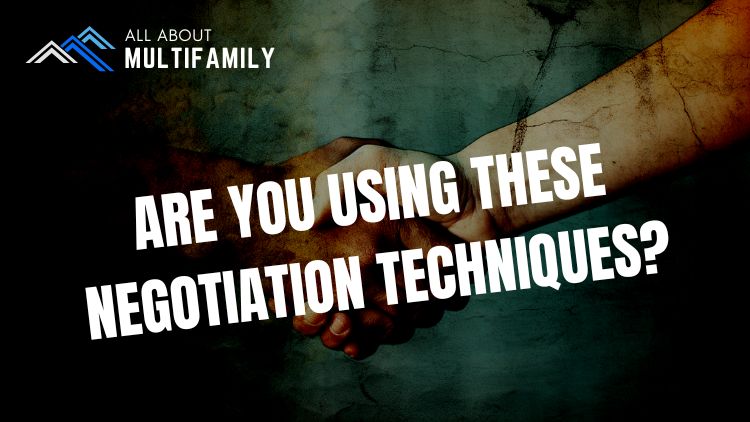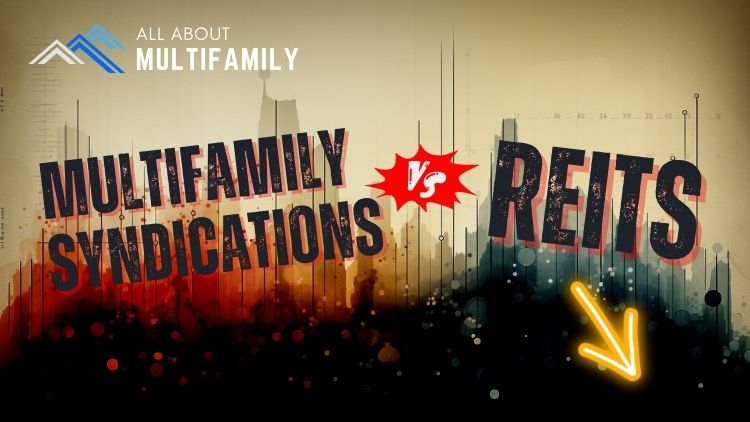Negotiation is a crucial skill in the real estate industry, as it can significantly impact the success of a deal. Whether you’re a buyer, seller, or real estate agent, employing effective negotiation techniques can help you achieve your objectives, secure a favorable agreement, and close the deal successfully. In this article, we will explore essential negotiation techniques that can give you a competitive edge in the real estate market.
1. Do Your Homework
Knowledge is power in negotiations. Before entering any real estate negotiation, thoroughly research the property, the local market, recent comparable sales, and the parties involved. Understand the motivations and constraints of the other party to identify areas of common ground and potential areas of compromise. Being well-informed will boost your confidence and credibility during the negotiation process.
2. Establish Clear Objectives
Define your negotiation objectives clearly and realistically. Know what you want to achieve from the deal, whether it’s a specific price, favorable terms, or concessions. Having clear goals helps you stay focused and avoid getting sidetracked during the negotiation.
3. Listen and Understand
Effective negotiation is not just about making demands; it’s also about active listening and understanding the other party’s needs and concerns. Pay attention to what the other party is saying and ask open-ended questions to gather insights into their priorities. Understanding their perspective can help you tailor your offers and find mutually beneficial solutions.
4. Be Prepared to Compromise
Real estate negotiations often require a give-and-take approach. While it’s essential to have clear objectives, be prepared to make concessions to reach an agreement. Identify which aspects of the deal are non-negotiable and where you can be flexible.
5. Build Rapport
Establishing a positive rapport with the other party can foster a more collaborative and productive negotiation process. Be respectful, professional, and approachable. Find common interests or shared goals to build a rapport that can lead to constructive discussions.
6. Highlight Your Unique Selling Points
If you’re the seller or representing the seller, emphasize the property’s unique selling points during the negotiation. Showcase any recent improvements, desirable features, or potential for growth. Demonstrating the value of the property can justify your asking price and strengthen your negotiation position.
7. Create a Win-Win Situation
Strive to create a win-win situation where both parties feel satisfied with the deal. Identify areas where you can add value to the other party’s objectives while achieving your own. A collaborative approach can lead to a more harmonious and successful negotiation outcome.
8. Use Timing to Your Advantage
Timing can play a crucial role in negotiations. Stay attuned to market conditions, time-sensitive factors, and the other party’s circumstances. If you sense urgency or favorable conditions, you can use this to your advantage during the negotiation process.
9. Control Emotions
Negotiations can be emotionally charged, especially when significant financial decisions are involved. Stay composed and avoid making impulsive decisions based on emotions. Focus on facts, data, and your predefined objectives to guide the negotiation.
10. Offer Multiple Proposals
Presenting multiple proposals can be an effective negotiation tactic. This provides the other party with options and demonstrates your willingness to work towards a mutually beneficial agreement. Having alternatives can keep the negotiation moving forward even if the initial offer is not accepted.
11. Leverage Third-Party Expertise
In some cases, bringing in a neutral third party, such as a professional mediator or real estate agent, can help facilitate the negotiation process. A skilled mediator can bridge the gap between parties and find common ground, leading to a smoother and more efficient negotiation.
6 Negotiation Techniques For Real Estate Investors
- Trade-Off
The trade-off negotiation technique involves offering concessions or giving up something of value to gain something else in return. In a real estate context, this could mean a buyer agreeing to a higher purchase price in exchange for the seller making certain repairs or including specific appliances. Similarly, a seller might agree to a lower price if the buyer agrees to a quick closing or waives some contingencies. Trade-offs are common in real estate negotiations and can help bridge the gap between parties with differing preferences and priorities.
- Nibble
The nibble technique involves making a small last-minute request or demand just before closing the deal. For example, in a real estate transaction, the buyer might suddenly ask the seller to include certain furniture items or cover a minor repair expense that was not previously discussed. The idea behind the nibble technique is to catch the other party off guard and to test their willingness to make a final concession. While it can be effective in gaining a little extra value, it should be used sparingly and with consideration of the overall negotiation dynamics.
- Vice Principle
The vice principle negotiation technique involves creating a sense of urgency or time pressure to influence the other party’s decision. In real estate negotiations, a buyer might use this technique by expressing strong interest in the property but indicating they have other attractive options available, hinting at the possibility of walking away if the seller doesn’t meet their terms. The vice principle technique aims to prompt the other party to act quickly to avoid losing the deal to someone else.
- Flinch Technique
The flinch technique is a subtle and emotional response to an offer or proposal made by the other party. In a real estate deal, it could involve the buyer reacting with surprise or dismay to the seller’s asking price. By flinching, the buyer aims to convey that the price is higher than they expected or are willing to pay. This technique can create doubt in the seller’s mind and potentially lead to a counteroffer or a more favorable price adjustment.
- Doorknob Technique
The doorknob technique is used when one party waits until they are about to leave or end the negotiation before making a significant concession or revealing crucial information. In a real estate negotiation, the doorknob technique might be applied when the seller or buyer signals that they are ready to walk away from the deal unless a specific demand is met. This can create a sense of urgency and motivate the other party to act quickly to salvage the negotiation.
- Red Herring
The red herring technique involves diverting the other party’s attention from the main issue or point of contention by introducing a distracting or irrelevant topic. In a real estate negotiation, a party might use a red herring to steer the discussion away from price and focus on other aspects of the property or transaction. By doing so, they hope to downplay the importance of price and gain an advantage in the negotiation. Recognizing and addressing red herrings is crucial to maintaining focus on the key negotiation points.
How Does the Flinch Technique Work in Real Estate?
In real estate negotiations, the Flinch Technique can be applied when presented with a seller’s initial asking price, a counteroffer, or during the discussion of other terms such as repairs or closing costs. By using the Flinch Technique, investors can convey the impression that the offer is far from their expectations, which may lead the seller to reconsider their price or provide more favorable conditions.
Example 1: Negotiating the Purchase Price
Imagine you are interested in purchasing a residential property listed at $300,000, but after conducting a thorough analysis, you believe the property’s value is closer to $260,000. During negotiations with the seller or their agent, instead of immediately countering the $300,000 offer, you react with a subtle flinch. You might respond with a surprised expression and say, “Oh, that’s quite a bit higher than I expected.”
Your reaction subtly communicates that the price is beyond your comfort zone, and the seller may feel compelled to justify their asking price or be more willing to entertain a lower counteroffer.
Example 2: Negotiating Repairs and Renovations
In another scenario, you’ve completed a home inspection on a potential investment property and discovered some significant repair issues. The seller has priced the property with the assumption that it’s in perfect condition. Instead of merely presenting a list of repair costs, you employ the Flinch Technique.
Upon seeing the inspection report, you raise your eyebrows and remark, “Wow, I had no idea there were so many repair issues to address.” Your genuine surprise at the extent of repairs needed may prompt the seller to reconsider their pricing or even offer to cover some of the repair costs to move the deal forward.
Key Points to Remember
- Use the Flinch Technique sparingly and genuinely. Overusing it or coming across as insincere can harm trust and rapport during negotiations.
- Stay composed and professional throughout the negotiation process. The goal is to create a subtle impact, not to alienate the other party.
- Pair the Flinch Technique with well-researched market data and a solid rationale for your counteroffers. A well-prepared argument strengthens your negotiation position.
In conclusion, these negotiation techniques are essential tools for real estate professionals to effectively navigate the complexities of real estate deals. Understanding and using these techniques strategically can help parties find common ground, reach mutually beneficial agreements, and successfully close real estate transactions. However, it’s crucial to use these techniques ethically and in a manner that fosters open communication and trust between the parties involved.
FAQs
Do real estate agents have specialized negotiation training?
- Many real estate agents undergo negotiation training to enhance their skills in representing their clients’ interests effectively.
Can negotiation techniques be applied to both residential and commercial real estate deals?
- Yes, negotiation techniques are applicable to both residential and commercial real estate transactions.
How can I improve my negotiation skills in the real estate industry?
- Practice, study negotiation strategies, seek mentorship from experienced professionals, and attend workshops or training programs to improve your negotiation skills.
Are there any negotiation techniques to avoid during a real estate deal?
- It’s best to avoid aggressive or overly confrontational negotiation tactics, as they can create hostility and hinder productive discussions.
Can negotiation techniques be used in off-market deals as well?
- Yes, negotiation techniques are valuable in off-market deals, as they involve direct communication between the buyer and seller without listing the property publicly.



































![An In-Depth Look at Jake and Gino's Coaching Program [A Review]](https://allaboutmultifamilyinvesting.com/wp-content/uploads/2023/10/AAM-BMP-Blog-Covers-750-×-422px-6.jpg)


![Email Marketing Tips for Multifamily Real Estate Syndicators to Raise Capital [Templates included]](https://allaboutmultifamilyinvesting.com/wp-content/uploads/2023/09/AAM-BMP-Blog-Covers-750-×-422px-4.jpg)






![The Richest Kids In America [Book Review]](https://allaboutmultifamilyinvesting.com/wp-content/uploads/2023/09/AAM-BMP-Blog-Covers-750-×-422px-84.jpg)





















